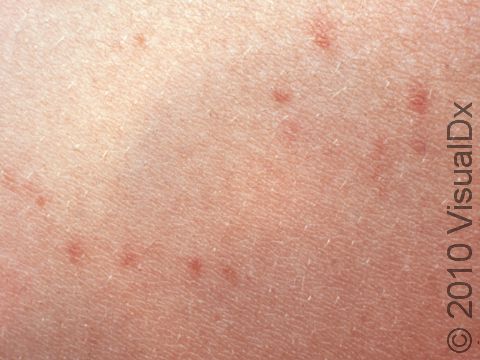Typhoid Fever
Typhoid fever is the name given to the illness caused by the bacterium Salmonella Typhi, a member of the Salmonella family. Typhoid fever is spread through food and water contaminated by animal and human feces. Typhoid fever is very rare in the United States and other developed nations, and it is more common in underdeveloped nations, particularly Latin America, Asia, and Africa. When traveling to underdeveloped areas, a good way to remember what foods and beverages are safe is to think of the following: If you cannot boil it (to kill bacteria), peel it (to remove bacteria) or cook it (to kill bacteria), do not eat it. When traveling to areas without clean drinking water, also remember to avoid ice cubes, which may be made with contaminated water, and to check the seal on all bottled water that you purchase (as the water bottle may have been refilled with unclean water). Some travelers drink only carbonated water in order to avoid this issue.
The longer typhoid fever symptoms go untreated, the higher the risk of complications, including the spread of the bacteria to the blood (sepsis) and death.
Who's At Risk?
Anyone who comes into contact with contaminated food or water is at risk of developing typhoid fever; the very young, very old, and those who are immunocompromised are at much greater risk of developing more severe disease.
Signs & Symptoms
The distinguishing characteristics of typhoid fever illness are high fever (temperature as high as 40°C [104°F]), feeling generally weak and achy (malaise), headache, loss of appetite, rash, and sometimes diarrhea or constipation. These symptoms usually begin within hours to days of ingesting the contaminated substance and may go away on their own within a week but, if left untreated, may last for weeks.
Symptoms of typhoid fever are as follows:
- High fever (temperature of 38–40°C [102–104°F])
- Malaise (achiness and weakness)
- Abdominal pain
- Change in stool output, such as constipation or diarrhea
- Rarely, a flat (not raised) rash of dark pink spots
Self-Care Guidelines
If you have traveled to an area of the world where typhoid is endemic and you exhibit the symptoms listed above, seek medical attention and let your doctor know about your travel history. Until you can see the doctor, try to stay hydrated, preferably with a liquid that contains some sugar and electrolytes, such as a sports drink. Drink at least 2 liters of this liquid a day. Eat a bland (not spicy) low-fat diet, avoiding milk and dairy products until the diarrhea improves. Practice good hand hygiene, as the bacteria can be easily spread from one person to another through fecal contamination.
Treatments
Your doctor will prescribe a regimen of antibiotics, after stool or blood testing has shown the S. Typhi bacterium is present. There is a vaccine available for people traveling to regions where S. Typhi is endemic. The vaccine is not available for children under the age of 6 and is not safe for immunocompromised people, however, so this group of travelers must be extra vigilant to avoid contaminated foods and water.
Visit Urgency
For any illness with high fever, rash, and gastrointestinal symptoms, it is a good idea to consult a doctor. There are very few cases of typhoid fever diagnosed in the United States every year, and most are in recently returned international travelers. Make sure to tell your doctor where you have recently been, or if you are traveling when the symptoms begin, seek medical care wherever you are. Typhoid fever can be difficult to diagnose by symptoms alone, but your doctor can easily test your stool for the presence of the S. Typhi bacterium.
Trusted Links
Last modified on October 6th, 2022 at 2:49 pm

Not sure what to look for?
Try our new Rash and Skin Condition Finder
